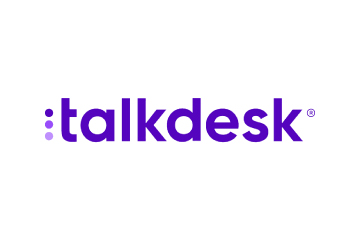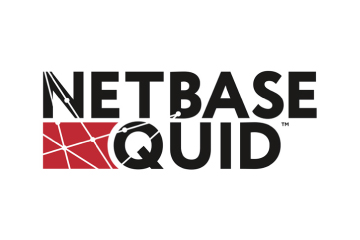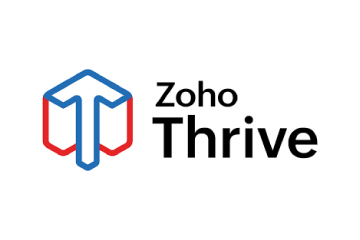Brands face a new challenge: fighting the hidden enemies of mobile CX. From clunky UX to AI-powered fraud and engagement fatigue, this story unpacks why the mobile app experience is failing and how to fix it.
For over a decade, brands have poured resources into building mobile apps, believing that being “mobile-first” would future-proof their business. But in 2025, with expectations sharper and loyalty more fragile, that assumption is falling apart.
The truth is stark: today’s consumers want apps that work. Apps that make life easier, safer, and more intuitive. And when they don’t? Customers don’t complain. They swipe away.
Three forces are quietly eroding mobile loyalty, even as brands boast about downloads and engagement rates: Friction, Fraud, and Fatigue. They’re not new, but their impact that’s amplified by AI, heightened expectations, and competitive alternatives has become a nightmare.
Friction: The Cost of Clunky Convenience
Customers don’t measure mobile success by design awards or new features. They measure it by speed, simplicity, and whether it saves them time. And too often, the answer is no.
Despite 49% of UK shoppers using smartphones for their most recent purchase, the UK ranks last in mobile engagement among eight major markets, according to the 2025 Global Digital Shopping Index. Yes, apps are built but not necessarily built for real-world, end-to-end journeys.
 “Every point of friction, repeating information, switching channels, waiting for an email, is a moment you lose to that higher standard,” says Baker Johnson, Chief Business Officer at UJET. “The immediate opportunity is to embrace the smartphone for what it is: the most direct, powerful, and data-rich option for minimising and improving your CX.”
“Every point of friction, repeating information, switching channels, waiting for an email, is a moment you lose to that higher standard,” says Baker Johnson, Chief Business Officer at UJET. “The immediate opportunity is to embrace the smartphone for what it is: the most direct, powerful, and data-rich option for minimising and improving your CX.”
Some retailers are taking note. shoezone has seen an 8% lift in app conversion rates over its website since launching its mobile app, driven by practical features like wishlists, intuitive filtering, and integrated next-day delivery. Weekly downloads are up 24%.
Road Runner Sports is translating this mindset into physical stores. Its adoption of Aptos ONE, a mobile-first POS system, has redefined frontline service. Store associates can manage returns, view inventory, and complete purchases from a single device, eliminating handoffs and hesitation. It’s not just mobile-first. It’s customer-first in motion.
Fraud: The Hidden Risk Beneath the Surface
Convenience without trust is a short-lived advantage. As mobile apps becomes the gateway to commerce, health, travel, and finance, it also becomes a magnet for threats. AI-powered fraud techniques like biometric spoofing, mobile deepfakes, and bot-driven credential attacks are undermining the very confidence that frictionless CX is meant to build.
 “Cyberattacks don’t just impact the digital experience,” warns Jack Kerr, Director, Go-to-Market (EMEA) at Appdome. “They leave consumers with a sense of violation and distrust. In fact, 71% of people will abandon a mobile brand after a breach.”
“Cyberattacks don’t just impact the digital experience,” warns Jack Kerr, Director, Go-to-Market (EMEA) at Appdome. “They leave consumers with a sense of violation and distrust. In fact, 71% of people will abandon a mobile brand after a breach.”
The trouble is, most brands still treat security as a backend function not a CX pillar. But customers don’t separate the two. One compromise is all it takes to erode trust built over years.
Brands like MandM are rewriting this script. In partnership with Valtech, the retailer has launched an AI-enhanced mobile app that prioritises not just performance but protection. With Google Cloud at the core and Contentstack powering dynamic content, the experience is adaptive, intelligent and secure by design.
It’s a shift from reactive to resilient. And it’s long overdue.
Fatigue: The Overlooked Threat to Engagement
In the pursuit of “stickiness,” many apps have turned into noise machines. Push alerts, loyalty prompts, abandoned cart nudges, each intended to re-engage, but together they overwhelm.
CX fatigue doesn’t stem from too many messages. It stems from too little meaning.
 “It’s not just about having an app anymore,” says Sarah Maina, Regional Manager, Middle East & France at AppsFlyer. “It’s about making that app the primary channel for engagement, service, and conversion.”
“It’s not just about having an app anymore,” says Sarah Maina, Regional Manager, Middle East & France at AppsFlyer. “It’s about making that app the primary channel for engagement, service, and conversion.”
That means coherence across devices, clarity in messaging, and continuity across touchpoints. But for many brands, mobile still sits on the periphery of a fragmented CX strategy.
Only 13% of UK shoppers used cross-channel shopping features in their last purchase, despite 61% of merchants offering them. And in France, users often fill mobile carts only to convert later on desktop or in-store. The mobile journey isn’t broken. It’s just incomplete.
 “People get fatigued from companies that continuously make promises and don’t come through,” adds CX expert Jeofrey Bean. “If you want advocacy, you have to design interactions that come through on your brand promise, again and again.”
“People get fatigued from companies that continuously make promises and don’t come through,” adds CX expert Jeofrey Bean. “If you want advocacy, you have to design interactions that come through on your brand promise, again and again.”
One brand doing this with discipline is Next, which is rebuilding its mobile commerce stack from the ground up. Migrating to a native app and overhauling its delivery workflow, the team cleared a full season’s backlog and cut 30 weeks from their roadmap. The message? Fewer projects. More impact.
Build Mobile Apps Against the Fs
None of the “three Fs” are new. What’s changed is the context in which they operate and the cost of ignoring them.
Mobile CX can no longer afford to be an afterthought, a side channel, or a digital twin of a web platform. In 2025, your app is your brand delivering the full promise of convenience, credibility, and continuity, or quietly dismantling it.
That means:
- Designing for clarity, not just visual appeal
- Building in protection, not patching on security
- Delivering substance, not just engagement
It also means redefining measurement. From clicks to commitment. From installs to retention. From messaging volume to message value.
“You need a customer experience intelligence portfolio,” says Bean, “a mix of data, ethnographic observation, and thick insights to understand the human experience behind the behaviour.”
The brands that succeed will build trust, relevance, and restraint into every interaction. Not just to win downloads but to earn loyalty in the most demanding interface of all: the customer’s life. And that’s a promise no push notification can fake.



















 Amplitude is a product analytics platform, enabling businesses to track visitors with the help of collaborative analytics. The platform leverages the capabilities of
Amplitude is a product analytics platform, enabling businesses to track visitors with the help of collaborative analytics. The platform leverages the capabilities of 




 Zoho Social, a part of Zoho’s suite of 50+ products, is a comprehensive social media management platform for businesses and agencies. The Zoho Social dashboard includes a robust set of features, such as Publishing Calendar, Bulk Scheduler, and Approval Management to offer businesses all the essential social media publishing tools. Its monitoring tools help enterprises track and respond to relevant social conversations.
Zoho Social, a part of Zoho’s suite of 50+ products, is a comprehensive social media management platform for businesses and agencies. The Zoho Social dashboard includes a robust set of features, such as Publishing Calendar, Bulk Scheduler, and Approval Management to offer businesses all the essential social media publishing tools. Its monitoring tools help enterprises track and respond to relevant social conversations.

 Microsoft Dynamics 365 represents a robust cloud-based CRM solution with features such as pipeline assessment, relationship analytics, and conversational intelligence. It utilises AI-powered insights to provide actionable intelligence via predictive analytics, lead scoring, sentiment analysis, etc. Currently, Microsoft operates in 190 countries and is made up of more than 220,000 employees worldwide.
Microsoft Dynamics 365 represents a robust cloud-based CRM solution with features such as pipeline assessment, relationship analytics, and conversational intelligence. It utilises AI-powered insights to provide actionable intelligence via predictive analytics, lead scoring, sentiment analysis, etc. Currently, Microsoft operates in 190 countries and is made up of more than 220,000 employees worldwide.

 HubSpot is an inbound marketing, sales, and customer service software provider, offering robust CRM and automation solutions. Some of its products include Marketing Hub, Sales Hub, Operations Hub, Content Hub, Commerce Hub, Marketing Analytics and Dashboard Software. Guided by its inbound methodology, HubSpot enables companies to prioritise innovation and customer success.
HubSpot is an inbound marketing, sales, and customer service software provider, offering robust CRM and automation solutions. Some of its products include Marketing Hub, Sales Hub, Operations Hub, Content Hub, Commerce Hub, Marketing Analytics and Dashboard Software. Guided by its inbound methodology, HubSpot enables companies to prioritise innovation and customer success.
 Monday.com is a project management software company, offering a cloud-based platform that enables businesses
Monday.com is a project management software company, offering a cloud-based platform that enables businesses  Headquartered in San Mateo, California, Freshworks is a global AI-powered business software provider. Its tech stack includes a scalable and comprehensive suite for IT, customer support, sales, and marketing teams, ensuring value for immediate business impact. Its product portfolio includes Customer Service Suite, Freshdesk, Freshchat, Freshcaller, Freshsuccess, and Freshservice. Freshservice for Business Teams has helped several global organisations to enhance their operational efficiency.
Headquartered in San Mateo, California, Freshworks is a global AI-powered business software provider. Its tech stack includes a scalable and comprehensive suite for IT, customer support, sales, and marketing teams, ensuring value for immediate business impact. Its product portfolio includes Customer Service Suite, Freshdesk, Freshchat, Freshcaller, Freshsuccess, and Freshservice. Freshservice for Business Teams has helped several global organisations to enhance their operational efficiency.
 Talkdesk offers an innovative AI-powered customer-centric tech stack to its global partners. The company provides generative AI integrations, delivering industry-specific solutions to its customers. Talkdesk CX Cloud and Industry Experience Clouds utilise modern machine learning and language models to enhance contact centre efficiency and client satisfaction.
Talkdesk offers an innovative AI-powered customer-centric tech stack to its global partners. The company provides generative AI integrations, delivering industry-specific solutions to its customers. Talkdesk CX Cloud and Industry Experience Clouds utilise modern machine learning and language models to enhance contact centre efficiency and client satisfaction.




 The company offers comprehensive cloud-based solutions, such as Microsoft Dynamics 365, Gaming Consoles, Microsoft Advertising, Copilot, among other things, to help organisations offer enhanced CX and ROI. Its generative-AI-powered speech and voice recognition solutions,such as Cortana and Azure Speech Services empowers developers to build intelligent applications.
The company offers comprehensive cloud-based solutions, such as Microsoft Dynamics 365, Gaming Consoles, Microsoft Advertising, Copilot, among other things, to help organisations offer enhanced CX and ROI. Its generative-AI-powered speech and voice recognition solutions,such as Cortana and Azure Speech Services empowers developers to build intelligent applications. IBM is a global hybrid cloud and AI-powered
IBM is a global hybrid cloud and AI-powered  Uniphore is an enterprise-class, AI-native company that was incubated in 2008. Its enterprise-class multimodal AI and data platform unifies all elements of voice, video, text and data by leveraging Generative AI, Knowledge AI, Emotion AI and workflow automation. Some of its products include U-Self Serve, U-Assist, U-Capture, and U-Analyze. Its Q for Sale is a conversational intelligence software that guides revenue teams with AI-powered insights, offering clarity on how to effectively keep prospects engaged.
Uniphore is an enterprise-class, AI-native company that was incubated in 2008. Its enterprise-class multimodal AI and data platform unifies all elements of voice, video, text and data by leveraging Generative AI, Knowledge AI, Emotion AI and workflow automation. Some of its products include U-Self Serve, U-Assist, U-Capture, and U-Analyze. Its Q for Sale is a conversational intelligence software that guides revenue teams with AI-powered insights, offering clarity on how to effectively keep prospects engaged. Google Cloud accelerates every organisation’s ability to digitally transform its business. Its enterprise-grade solutions leverage modern technology to solve the most criticial business problems
Google Cloud accelerates every organisation’s ability to digitally transform its business. Its enterprise-grade solutions leverage modern technology to solve the most criticial business problems  8×8 offers out-of-the-box contact centre solutions, assisting all-size businesses to efficiently meet customer needs and preferences. It offers custom CRM integrations support and integrates effortlessly with third-party CRMs like Salesforce, Microsoft Dynamics, Zendesk, and more. Offering global support in all time zones & development teams in 5 continents, its patented geo-routing solution ensures consistent voice quality.
8×8 offers out-of-the-box contact centre solutions, assisting all-size businesses to efficiently meet customer needs and preferences. It offers custom CRM integrations support and integrates effortlessly with third-party CRMs like Salesforce, Microsoft Dynamics, Zendesk, and more. Offering global support in all time zones & development teams in 5 continents, its patented geo-routing solution ensures consistent voice quality. Sprinklr is a comprehensive enterprise software company for all customer-focused functions. With advanced AI, Sprinklr’s unified customer experience management (Unified-CXM) platform lets organisations offer human experiences to every customer, every time, across any modern channel.
Sprinklr is a comprehensive enterprise software company for all customer-focused functions. With advanced AI, Sprinklr’s unified customer experience management (Unified-CXM) platform lets organisations offer human experiences to every customer, every time, across any modern channel.


 Upland offers a comprehensive suite of contact centre and customer service solutions with products including InGenius, Panviva, Rant & Rave, and RightAnswers. InGenius enables organisations to connect their existing phone system with CRM, further enhancing agent productivity. Panviva provides compliant and omnichannel capabilities for highly regulated industries. Whereas, Rant & Rave, and RightAnswers are its AI-powered solutions,
Upland offers a comprehensive suite of contact centre and customer service solutions with products including InGenius, Panviva, Rant & Rave, and RightAnswers. InGenius enables organisations to connect their existing phone system with CRM, further enhancing agent productivity. Panviva provides compliant and omnichannel capabilities for highly regulated industries. Whereas, Rant & Rave, and RightAnswers are its AI-powered solutions, 


 Hootsuite, headquartered in Vancouver, is a social media management platform that streamlines the process of managing multiple social media accounts. Some of its core offerings include social media content planning and publishing, audience engagement tools, analytics and social advertising. Its easy-to-integrate capabilities help marketing teams to schedule and publish social media posts efficiently.
Hootsuite, headquartered in Vancouver, is a social media management platform that streamlines the process of managing multiple social media accounts. Some of its core offerings include social media content planning and publishing, audience engagement tools, analytics and social advertising. Its easy-to-integrate capabilities help marketing teams to schedule and publish social media posts efficiently.

 Brandwatch enables businesses to build and scale the optimal strategy for their clients with intuitive, use-case-focused tools that are easy and quick to master. Bringing together consumer intelligence and social media management, the company helps its users react to the trends that matter, collaborate on data-driven content, shield the brand from threats and manage all the social media channels at scale.
Brandwatch enables businesses to build and scale the optimal strategy for their clients with intuitive, use-case-focused tools that are easy and quick to master. Bringing together consumer intelligence and social media management, the company helps its users react to the trends that matter, collaborate on data-driven content, shield the brand from threats and manage all the social media channels at scale.


 Adobe Experience Cloud offers a comprehensive set of applications, capabilities, and services specifically designed to address day-to-day requirement for personalised customer experiences at scale. Its platform helps play an essential role in managing different digital content or assets to improve customer happiness. Its easy-to-optimise content gives users appropriate marketing streams, ensuring product awareness.
Adobe Experience Cloud offers a comprehensive set of applications, capabilities, and services specifically designed to address day-to-day requirement for personalised customer experiences at scale. Its platform helps play an essential role in managing different digital content or assets to improve customer happiness. Its easy-to-optimise content gives users appropriate marketing streams, ensuring product awareness. Salesforce-owned Tableau is an AI-powered analytics and business intelligence platform, offering the breadth and depth of capabilities that serve the requirements of global enterprises in a seamless, integrated experience. Marketers can utilise generative AI models, AI-powered predictions, natural language querying, and recommendationsons.
Salesforce-owned Tableau is an AI-powered analytics and business intelligence platform, offering the breadth and depth of capabilities that serve the requirements of global enterprises in a seamless, integrated experience. Marketers can utilise generative AI models, AI-powered predictions, natural language querying, and recommendationsons. Contentsquare is a cloud-based digital experience analytics platform, helping brands track billions of digital interactions, and turn those digital
Contentsquare is a cloud-based digital experience analytics platform, helping brands track billions of digital interactions, and turn those digital 


 Zoho Corporation offers innovative and tailored software to help leaders grow their business. Zoho’s 55+ products aid sales and marketing, support and collaboration, finance, and recruitment requirements. Its customer analytics capabilities come with a conversational feature, Ask Zia. It enables users to ask questions and get insights in the form of reports and widgets in real-time.
Zoho Corporation offers innovative and tailored software to help leaders grow their business. Zoho’s 55+ products aid sales and marketing, support and collaboration, finance, and recruitment requirements. Its customer analytics capabilities come with a conversational feature, Ask Zia. It enables users to ask questions and get insights in the form of reports and widgets in real-time. Fullstory is a behavioural data platform, helping C-suite leaders make informed decisions by injecting digital behavioural data into its analytics stack. Its patented technology uncovers the power of quality behavioural data at scale, transforming every digital visit into actionable insights. Enterprises can increase funnel conversion and identify their highest-value customers effortlessly.
Fullstory is a behavioural data platform, helping C-suite leaders make informed decisions by injecting digital behavioural data into its analytics stack. Its patented technology uncovers the power of quality behavioural data at scale, transforming every digital visit into actionable insights. Enterprises can increase funnel conversion and identify their highest-value customers effortlessly.

 Started in 2005 in a Sweden-based small town, Norrköping, Voyado offers a customer experience cloud platform that includes a customer loyalty management system. This platform helps businesses design and implement customer loyalty programs, track customer
Started in 2005 in a Sweden-based small town, Norrköping, Voyado offers a customer experience cloud platform that includes a customer loyalty management system. This platform helps businesses design and implement customer loyalty programs, track customer 



 TapMango provides a comprehensive, customisable, flexible and feature-rich customer loyalty program. The loyalty tools include an integrated suite of customised consumer-facing technology, easy-to-use merchant tools, and automation algorithms, all aimed at enhancing customer experience. Adaptable to any industry, TapMango’s platform helps merchants compete with larger chains, converting customer one-time purchases into profitable spending habits.
TapMango provides a comprehensive, customisable, flexible and feature-rich customer loyalty program. The loyalty tools include an integrated suite of customised consumer-facing technology, easy-to-use merchant tools, and automation algorithms, all aimed at enhancing customer experience. Adaptable to any industry, TapMango’s platform helps merchants compete with larger chains, converting customer one-time purchases into profitable spending habits.






 Adobe Experience Cloud offers a comprehensive set of applications, capabilities, and services specifically designed to address day-to-day requirements for personalised customer experiences at scale. Its innovative platform has played an essential role in managing different digital content or assets, to improve customer happiness or satisfaction. Some of its products include Adobe Gen Studio, Experience Manager Sites, Real-time CDP, and Marketo Engage.
Adobe Experience Cloud offers a comprehensive set of applications, capabilities, and services specifically designed to address day-to-day requirements for personalised customer experiences at scale. Its innovative platform has played an essential role in managing different digital content or assets, to improve customer happiness or satisfaction. Some of its products include Adobe Gen Studio, Experience Manager Sites, Real-time CDP, and Marketo Engage.

